Kleiner’s Korner: Automotive Tests on the Motor Parkway
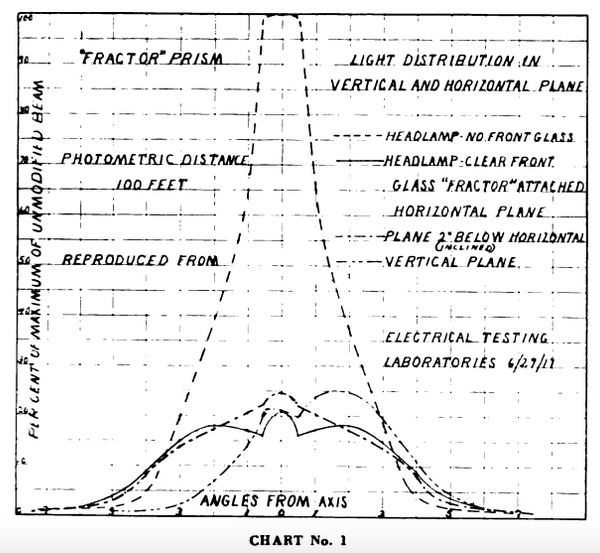
The Motor Parkway was used by product manufacturers and engineers to test their products under true road like conditions. Many were related to safety devices and gasoline efficiency with results reported in various trade publications.
Art Kleiner
Testing on the Motor Parkway

The 1906 prospectus for the The Long Island Motor Parkway specifically mentioned product testing as a purpose. (The Long Island Motor Parkway, Kroplick/Velocci)
Impact of Electronics on Fuel Consumption

This test was conducted by the Packard Motor Car Company to determine the impact of electronic usage on fuel consumption. The article is in response to a letter to the editor and was written by an electrical engineer for Packard and a "starter man". (The Automobile, December 18, 1913)
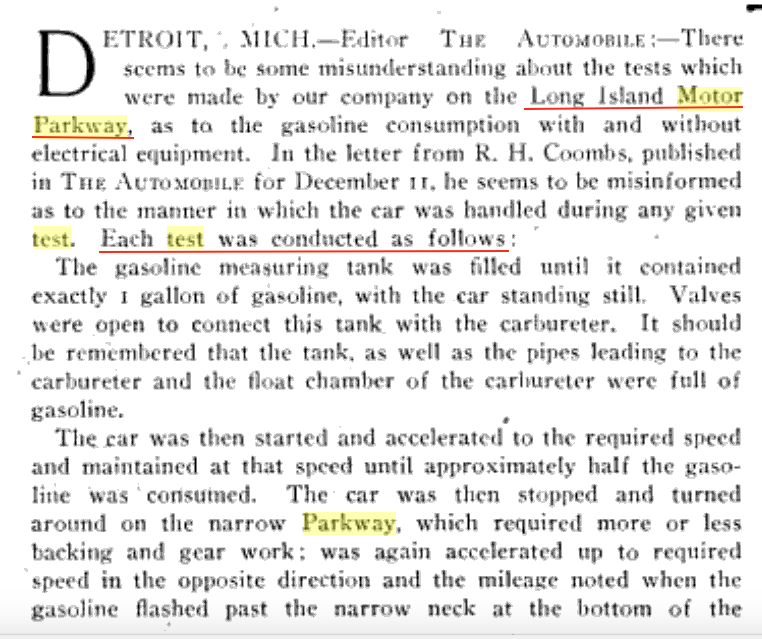
The car was filled with one gallon of gasoline and driven on the Motor Parkway until half the gas was used; it was then turned around and driven back. (The Automobile, December 18, 1913)
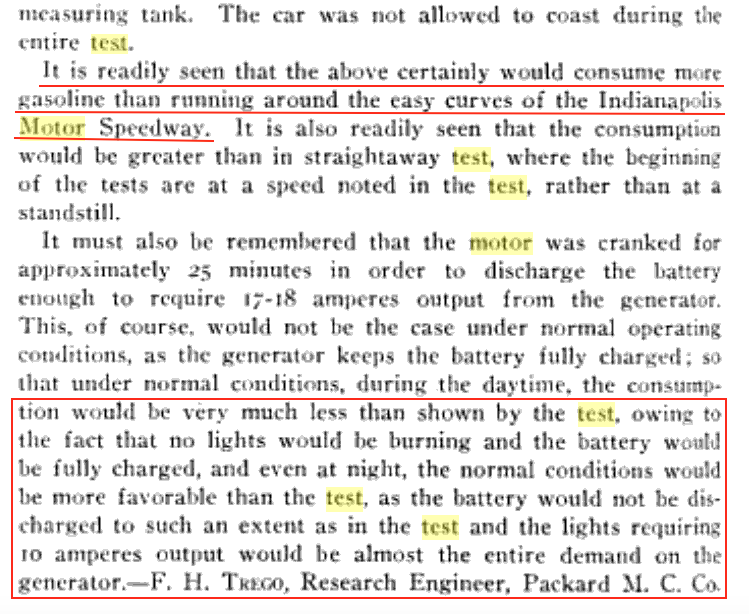
The mileage was noted when the gas indicator moved below a certain point. Electrical consumption involved the cranking of the motor for 25 minutes in order for lights to be used. It was theorized that gasoline usage would be much less without the lights. (The Automobile, December 18, 1913)
The Headlight Tests

This test involved the impact of different types of headlights on visibility. (Motor Travel, October 1917)
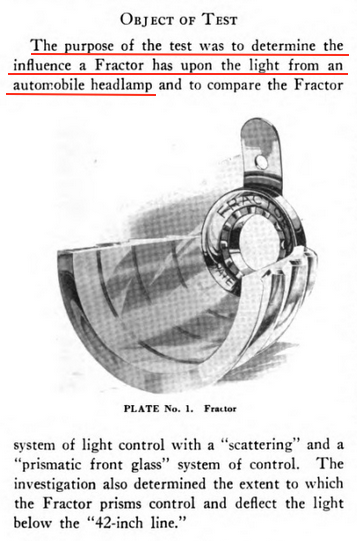
A fractor (e.g,. deflector?) was used on the headlights in comparison to other forms of light dispersion.
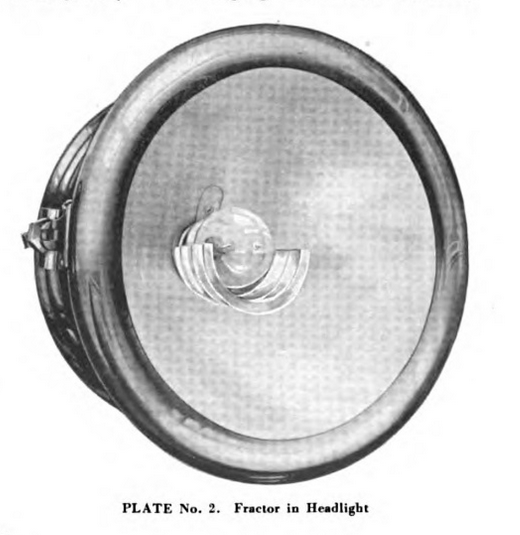
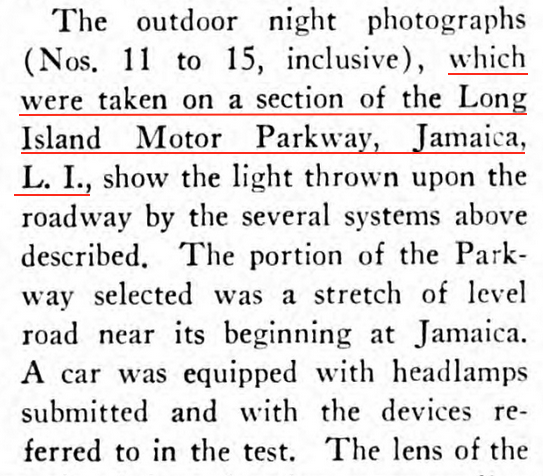
A car was fitted with various types of headlights and driven on the Motor Parkway during the evening; photographs were taken to compare light dispersion.
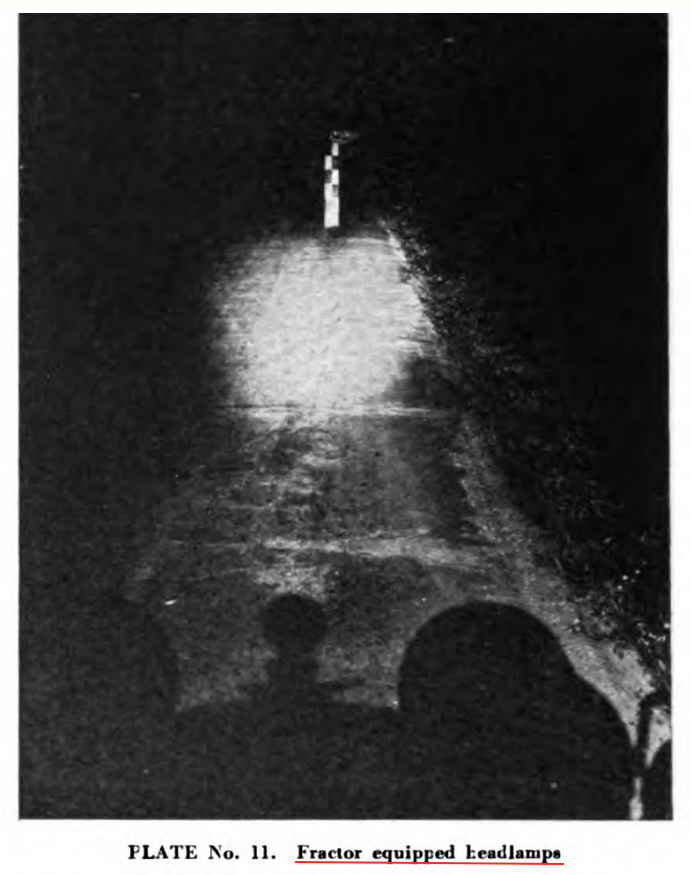
Fractor equipped headlights
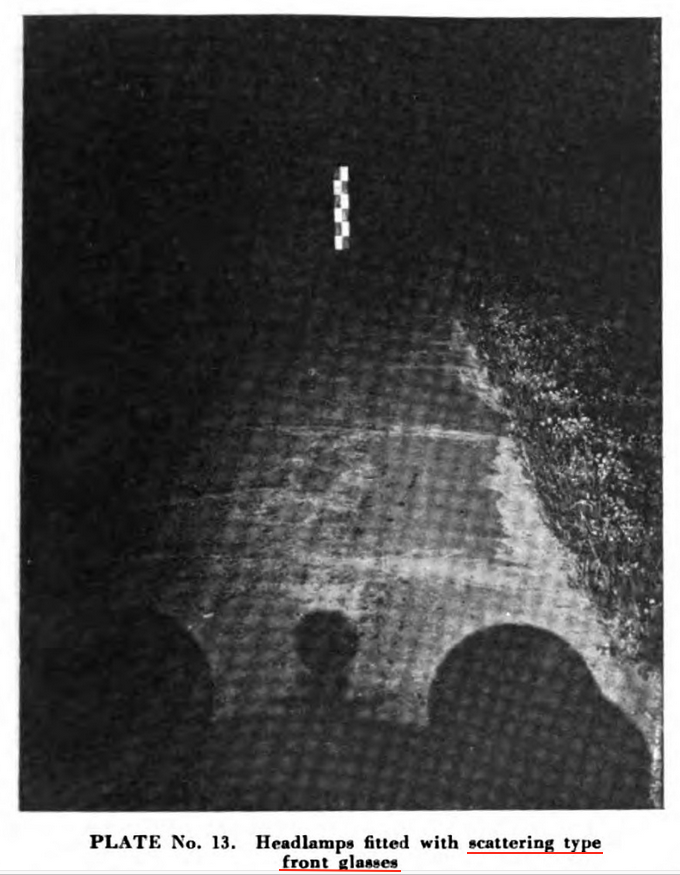
Scattering type front glasses
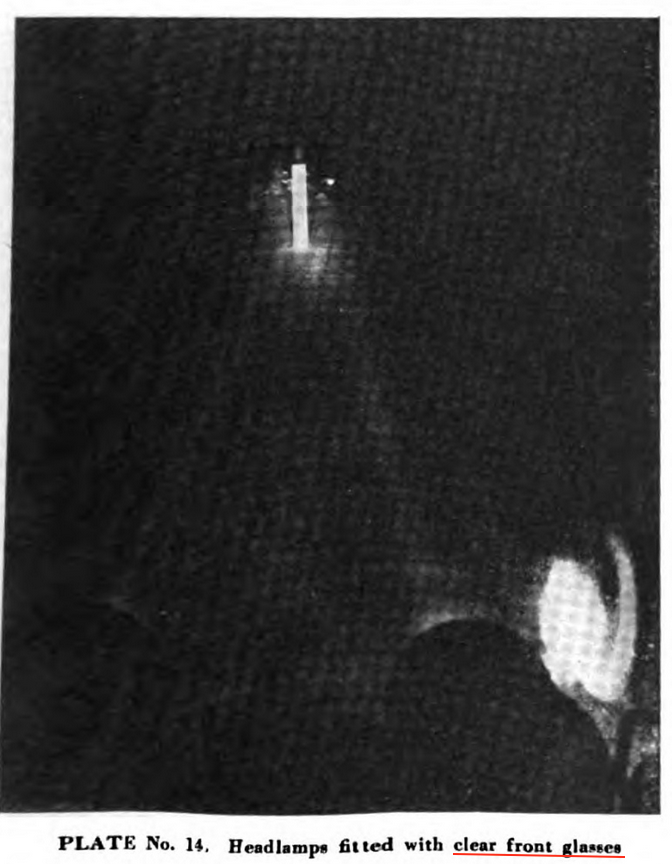
Clear front glass
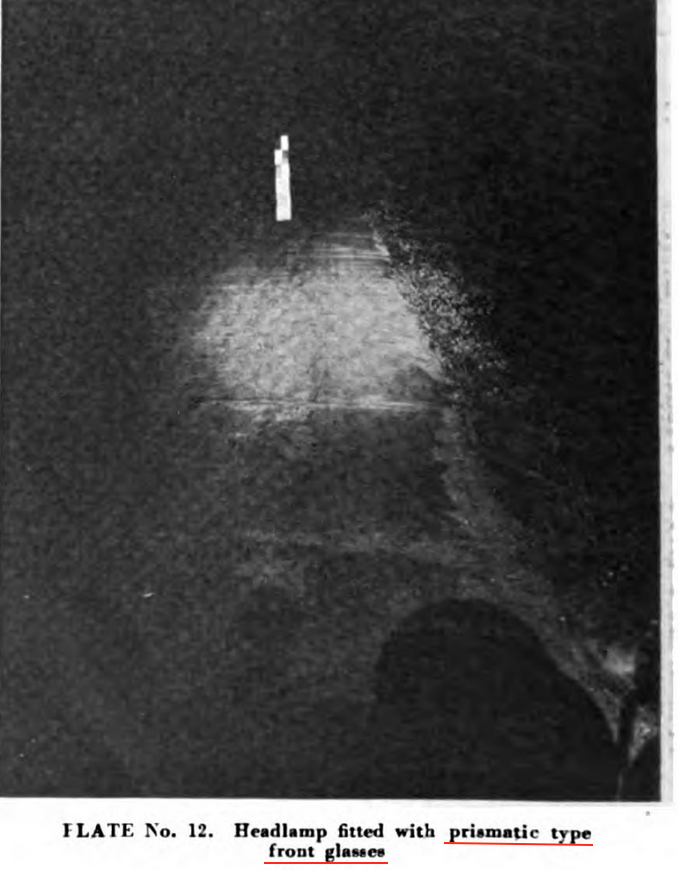
Prismatic type front glasses
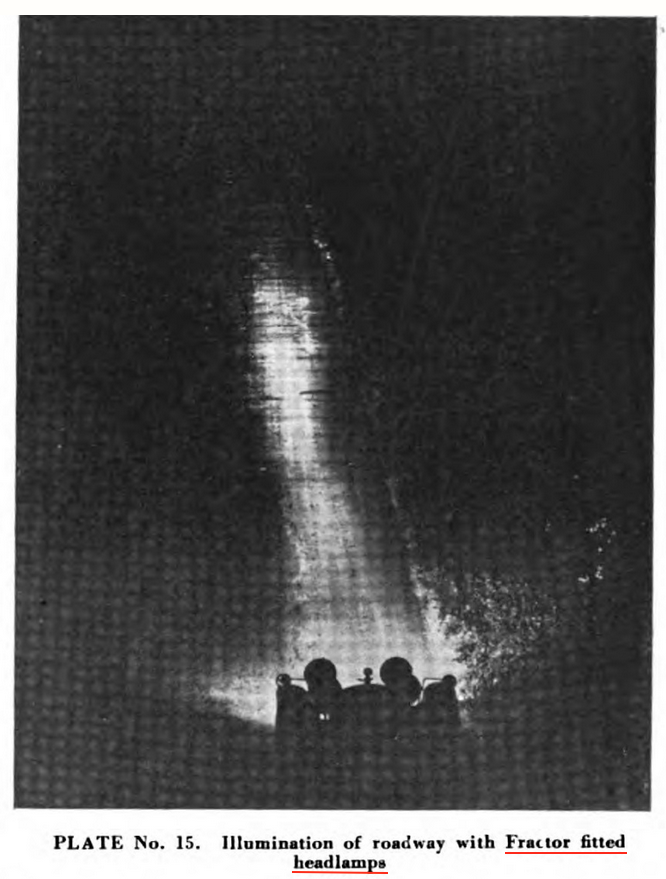
Fractor fitted headlamps
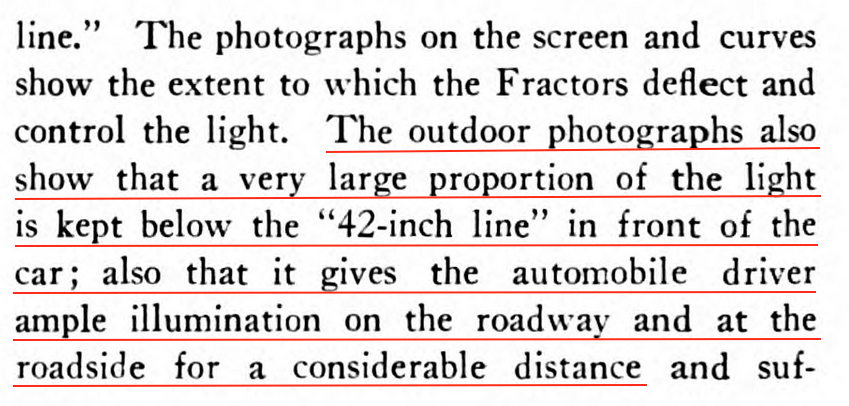
Fractor headlights proved sufficient for lighting the roadway.
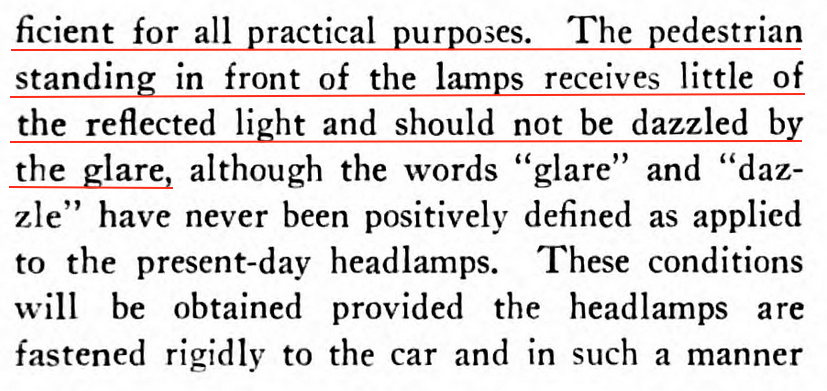
The effect on a pedastrian was also measured with results indicating minimal glare.
Kerosene Carburetor

Conducted by the ACA, this test was run at the request of the E-L Specialty Sales Company of NYC. (Motor Travel, October, 1918)
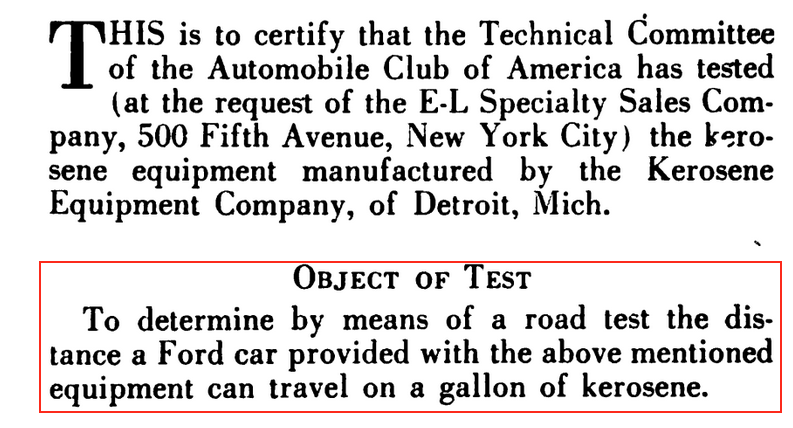
The purpose was to measure the distance a car would travel using a carburetor manufactured by the Kerosene Equipment Company of Detrioit.
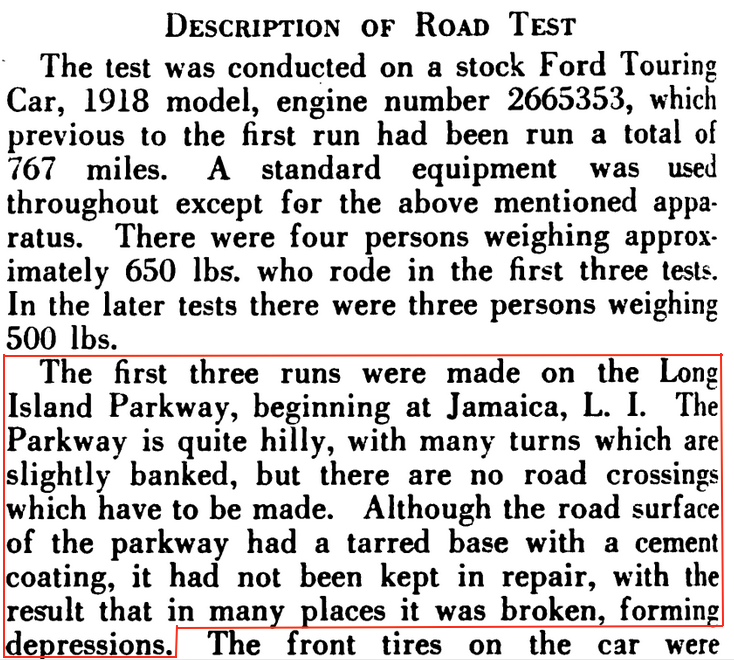
The Motor Parkway was driven on; and described as hilly with many banked curves and not kept in repair being broken with many depressions.
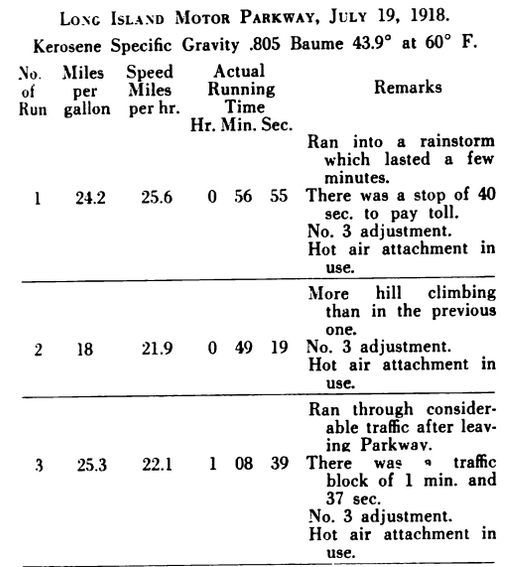
Three different runs resulted in mpg ranging from 18 to 25.3. Note the toll taking 40 seconds to get through and the traffic conditions. Any idea what a "hot air" attachment might be?
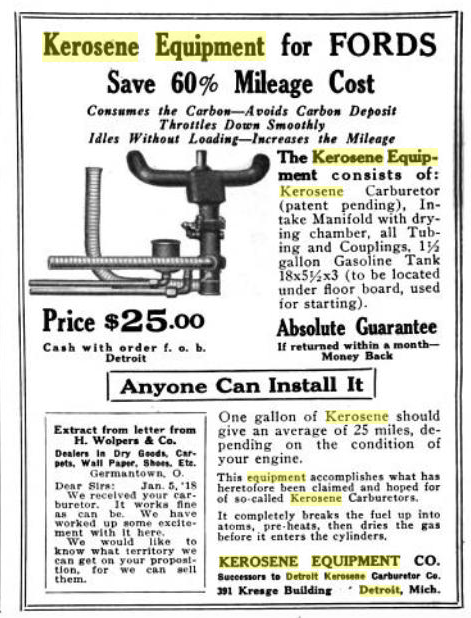
Motor Age, May 2, 1918
Trucks Were Also Tested

Maximum Speed, Fuel and Oil Consumption (Motor Travel, July 1916)
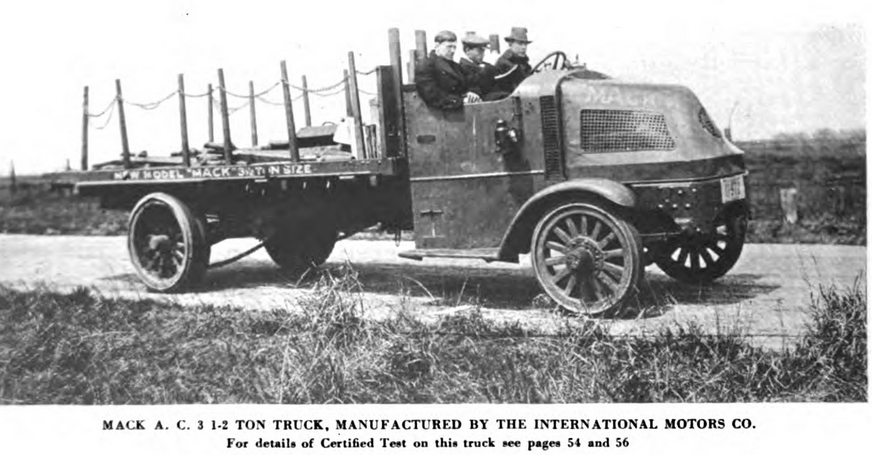
The AC model was manufactured continuously from 1916 through 1939 -- a remarkable 24 years, and 40,299 were built.
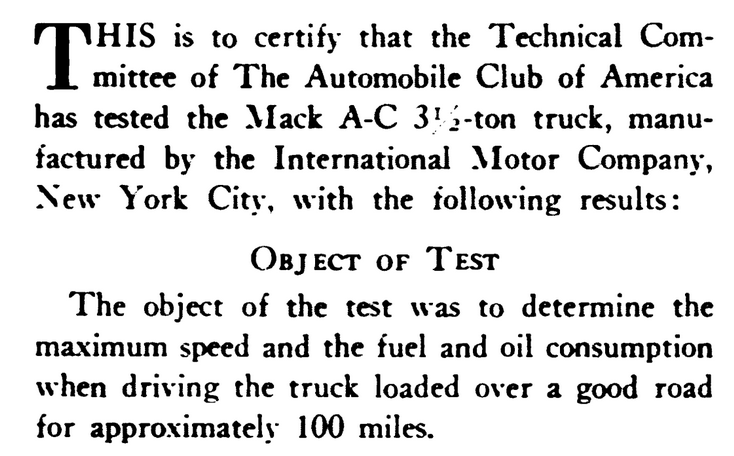
Mack was manufactured by the International Motor Company. The AC is not only credited with giving Mack its famous Bulldog identity, but also with achieving a degree of success and international fame that has never been accomplished by any other motor truck in history. (macktrucks.com)
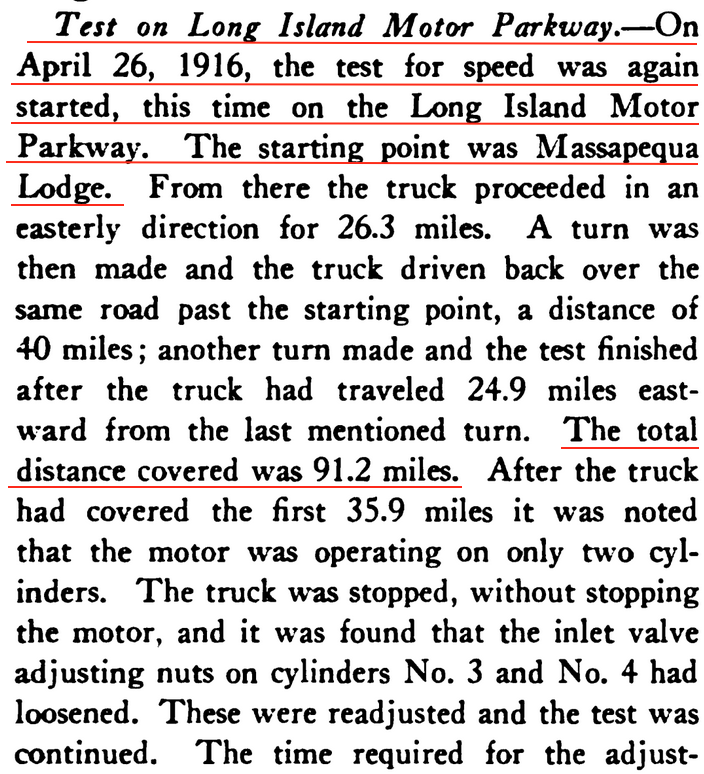
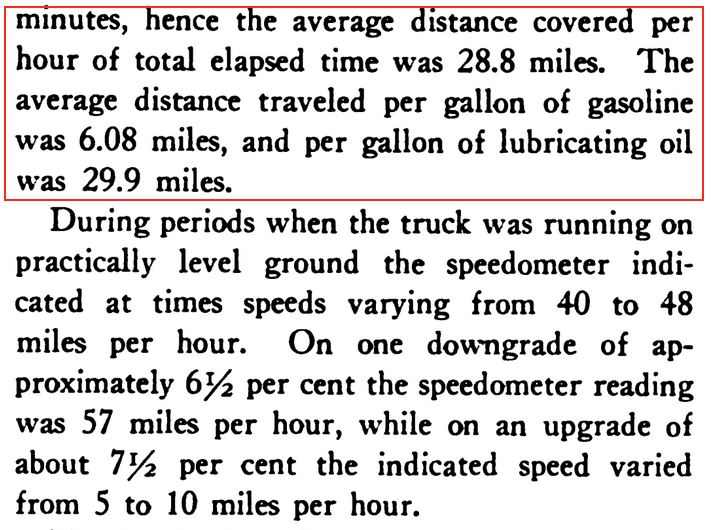
Results: average distance covered per hour - 28.8 miles; distance per gallon of gasloline - 6.08 miles, distance per gallon of lubricating oil - 29.9 miles. Guess it was a success since the Mack AC was a best seller.

Comments
A lot of cars with carburetors and even fuel injection routed hot air from the exhaust to warm the carb or incoming air
At first, I thought that a “hot air attachment” was an accessory that could be added to a car to heat up the passenger compartment (early cars did not have hot-water heaters). I think John has the right answer. Here is more detail: https://en.wikipedia.org/wiki/Carburetor_heat
Another test on the Motor Parkway was performed by VCR driver Ralph Munford in 1913 to determine speed using photography. From “Popular Mechanics” of April, 1913.